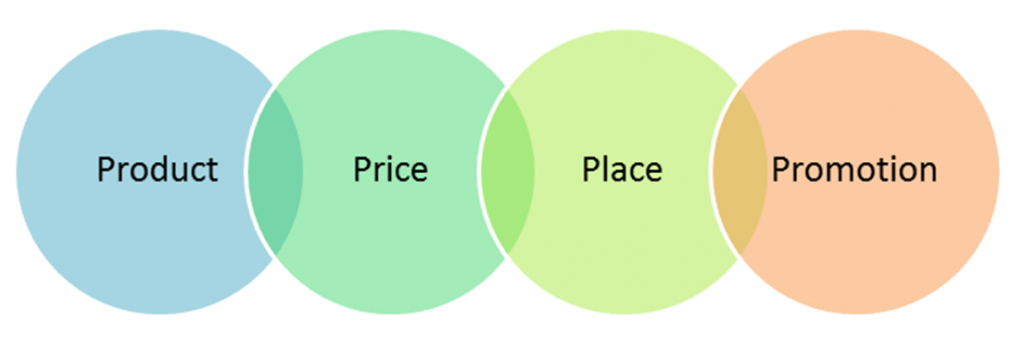

Green Marketing: best practices and examples
Green Marketing is part of the list of Marketing strategies and best practices that companies can apply in order to communicate their corporate vision and differentiate themselves from the competition.
According to a study conducted by the GreenPrint company, 78% of consumers are more likely to buy a product that is clearly labeled as organic. So if the strategy is done correctly, Green Marketing can be a great success.
¿What is Green Marketing?
Green Marketing consists of the commercialization and promotion of products and services that respect the environment and therefore do not have a negative impact on our planet and its atmosphere.
This concept was born in the 90s at a time when society began to have awareness and concern about the negative impact that our activities have on the planet and the atmosphere.
The initiative of innovative companies and the restrictive policies by the governments led to the appearance of ecological products and services, with biodegradable and recyclable material.
Although there is still a long way to go, more and more companies are prioritizing the inclusion of green policies. In the same way, consumers are now showing more interest in companies that act in a responsible way towards the environment.
Green Marketing means a change in the business culture
It is important to highlight that the main objective for applying a Green Marketing strategy it’s not an increase in sales. The main objective is the environment.
When Green Marketing is applied, there must also be a change in the culture of the company. It won’t do much good if a company adapts its packaging but does not promote recycling in its offices. Or if it applies green measures to one product, but not to another.
This fact is called Greenwashing, when companies claim to have products or processes that are environmentally friendly, but are not actually manufactured in a sustainable way.
Green Marketing with a single economic purpose can have a very negative impact on the reputation of the company.
Green Marketing Mix
Companies can put Green Marketing into practice by applying measures in the following aspects:
- The purpose of the product
- The materials or suppliers used to produce it
- Packaging
- The distribution and production channels
As in any other marketing strategy, before launching a green product, managers must take into account and analyze the 4Ps:
1. Product
This is the most important factor. The product must be developed taking into account all the possible impacts that its manufacture and use may have on the environment. Likewise, the company must assess what competitive advantage it brings to the market.
2. Price
Today, developing a green product is usually more expensive. However, the user will be willing to pay the difference as long as he fully understands the added value of our product and the reason for the extra cost.
4. Place
The channels we will use to sell our product must be in accordance with our ecological strategy, and therefore, promote those channels that have a similar business culture. The distribution and marketing team must work together to optimize the campaign.
4. Promotion
In order to communicate the added value of our green product, it is important to promote it well. Communication can go in several directions: the green product itself, the promotion of a sustainable living or our corporate environmental responsibility.
Best practices of Green Marketing
Next, we list some examples of practices that can be applied for a successful Green Marketing strategy:
- Apply green policies throughout the production and distribution process of your product.
- Add sustainability to your company’s list of values.
- Provide information to your employees to promote a responsible culture with the environment.
- Use traditional and/or digital media to explain to your audience the sustainable vision of the company, the benefits of your green product and the price of your product.
- Close collaboration agreements with other organizations with the same business culture.
- Support environmental communities and initiatives.
- Certify your product as sustainable.
Examples of Green Marketing
These are some of the brands known for their involvement in the environment and for their successful Green Marketing campaigns:
1. The Body Shop
The Body Shop is an international brand that offers its customers beauty products and cosmetics inspired by nature and respect with the environment. Likewise, it does not test any of its products on animals.
The company is very active promoting its organic and vegan products. In addition, the design of their stores is sustainable and they have several social initiatives.
2. Levi’s
Levi‘s is a recognized clothing brand very popular for the only use of denim in its clothing. The brand promotes eco-friendly and sustainable practices such as the use of recyclable denim or ethically sourced cotton and innovations to reduce the use of water.
3. BMW
Founded in 1916, BMW has evolved to become one of the most famous car brands in the world and one of the most environmentally friendly car manufacturers. Pioneers with its “i” series, BMW established itself as a manufacturer interested in making its processes as efficient and sustainable as possible.
4. Too Good To Go
Not only large corporations can apply Green Marketing. Too Good To Go is a mobile application that connects users with restaurants and stores that have unsold food. The Copenhagen-founded startup covers major European cities and already operates in North America.




